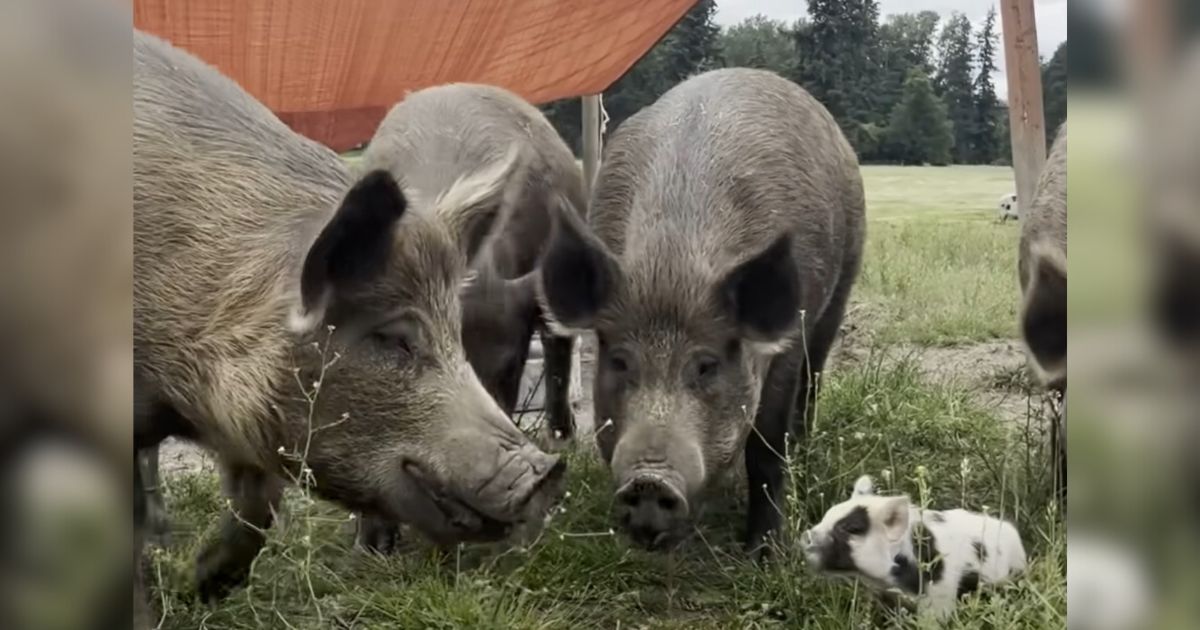The Wildlife Emergency Services in Santa Clara County, California received a disturbing and urgent call from a resident.
A raccoon was stuck inside their roof.
You read that right. The raccoon wasn’t stuck on the roof because they can easily climb up or down high structures or plants.
This raccoon was stuck inside the roof. She apparently chewed her way through the roof and she was trying to climb inside when she got stuck.

Because they had no idea how long the raccoon had been stuck like that, it was critical that they remedy the situation immediately!
The Wildlife Emergency Services instructed the homeowner to push the raccoon back out. She could suffocate if she was stuck any longer.
They taught the homeowner how to push the raccoon safely and they successfully rescued the raccoon. She quickly scurried to her babies.
The news reporters at KTVU Fox 2 were a little skeptical that this really happened. After all, there were a lot of products of the bottom half of people or animals getting stuck in a hole that was sold almost everywhere.
[
But, according to Humane Wildlife Control, Inc, this happens way more often than people think.
“A good reminder to not close up openings without taking precautions – animals might be inside. This mother raccoon was trying to get back to her babies after repairs were made and she was locked out,” the Humane Wildlife Control, Inc commented on the Facebook post about this news piece.

Connie Maschan chimed in that she had the same experience as a volunteer with Native Animal Rescue.
She helped a tenant with bird issues. Apparently, her landlord had sealed the vents to the house, most likely to avoid animals from getting into the house through the vents. What they forgot to do was check if there are animals already inside. And there were!
A couple of baby birds were stuck inside and the mama bird was trying to get to them and got stuck in the process.
Wildlife Emergency Services will assist the homeowner to create human repellents so the raccoon family and other animals can avoid their perimeter and look for other habitats.
View this post on Instagram
What are humane repellents and how do you know which one to use?
There are several that can be used depending on the type of animal you want to keep from invading your home or property.
There are area repellents, which smell bad or have an odor that causes fear.
You can use animal urine, rotten eggs, garlic oil, mint oil, or sewage sludge are examples of this. When you use area repellents though, remember that they are only temporary and can be washed away by rain or lose their effectiveness as time goes by. You will need to reapply regularly.
View this post on Instagram
There are also visual repellents that are meant to scare away animals.
These include flashing lights, scarecrows, and string fences. These can be made from items you already have in your home so it’s the more affordable option. However, animals can get used to it and eventually ignore it.
There are also acoustical repellents but it would require you to activate them when you see the animal. So this should only be used as a last resort in case the animal gets through your other repellents.
View this post on Instagram
If you’re unsure which repellent is best for you, get in touch with your local wildlife service office.
They’ll recommend the best option for you.
Watch the video below to learn more about this story!
Please SHARE this with your friends and family.


















